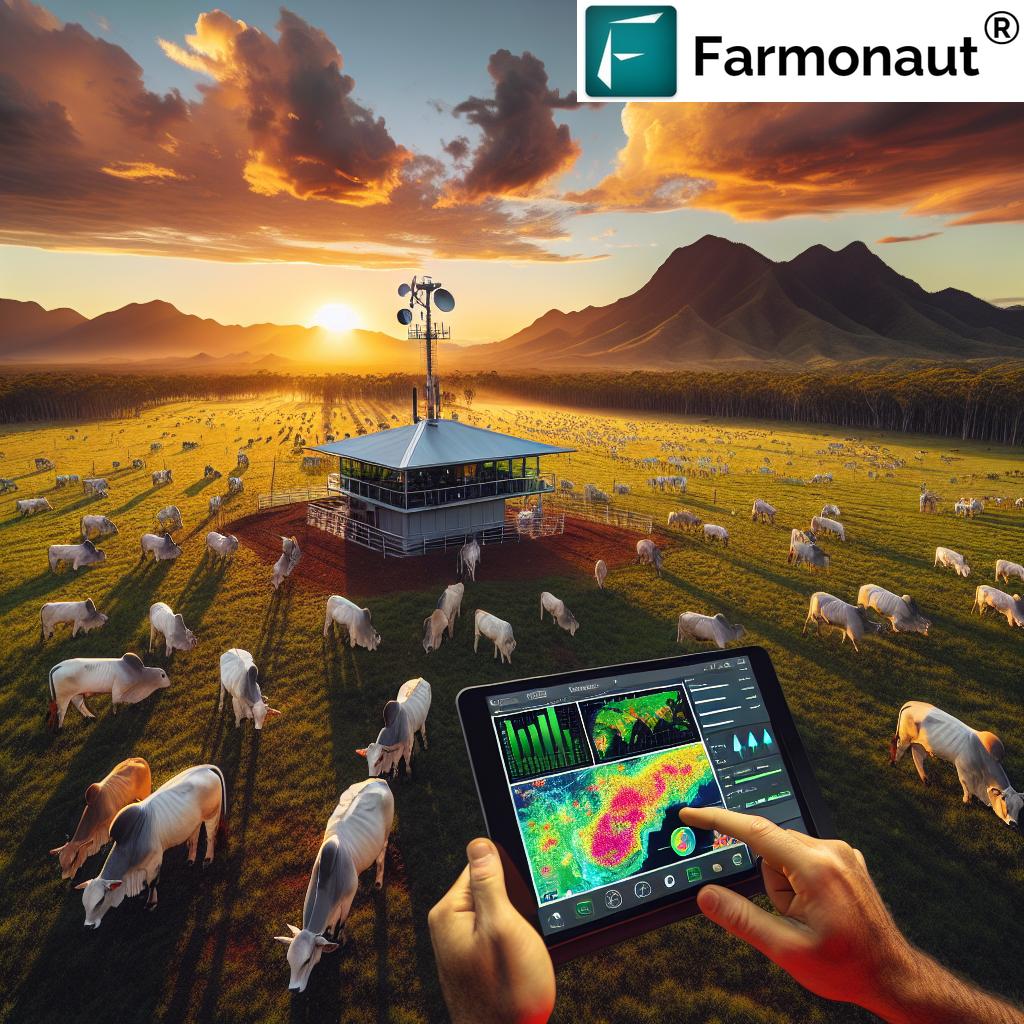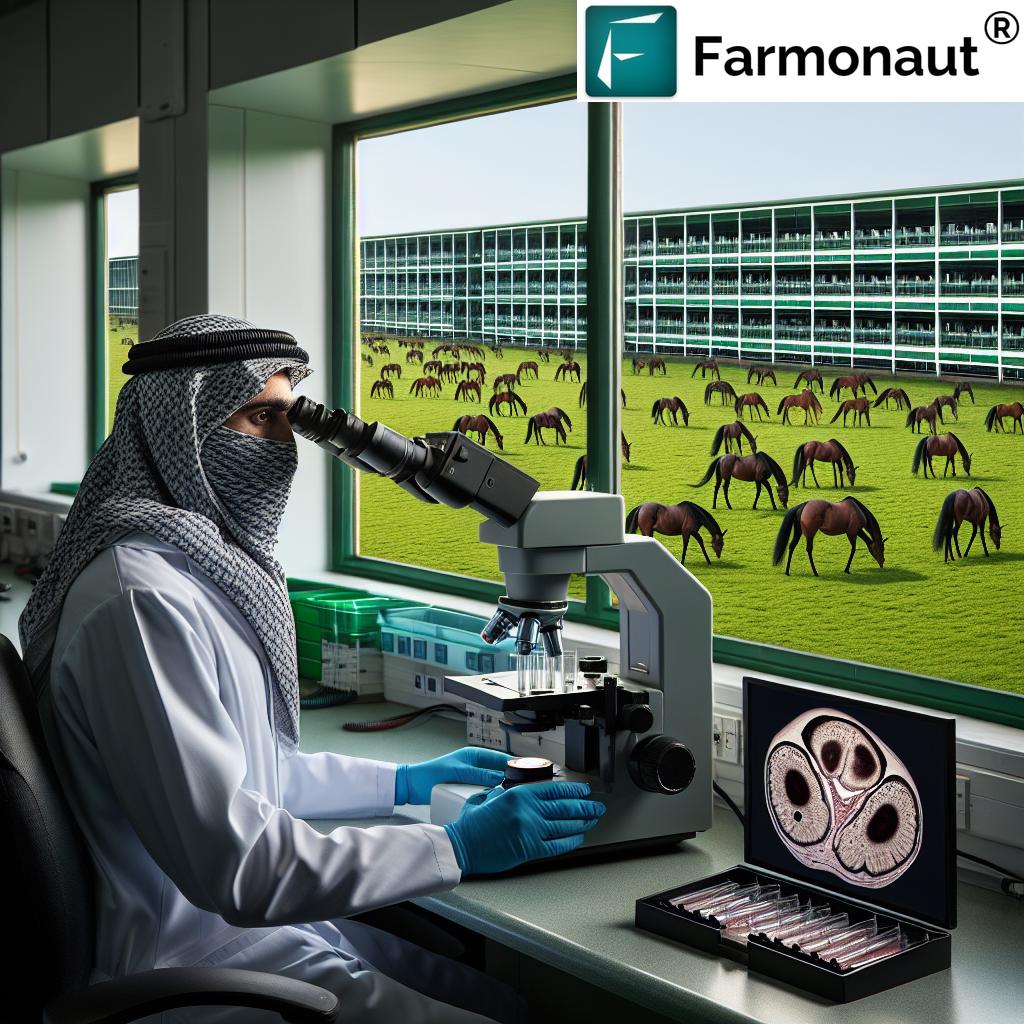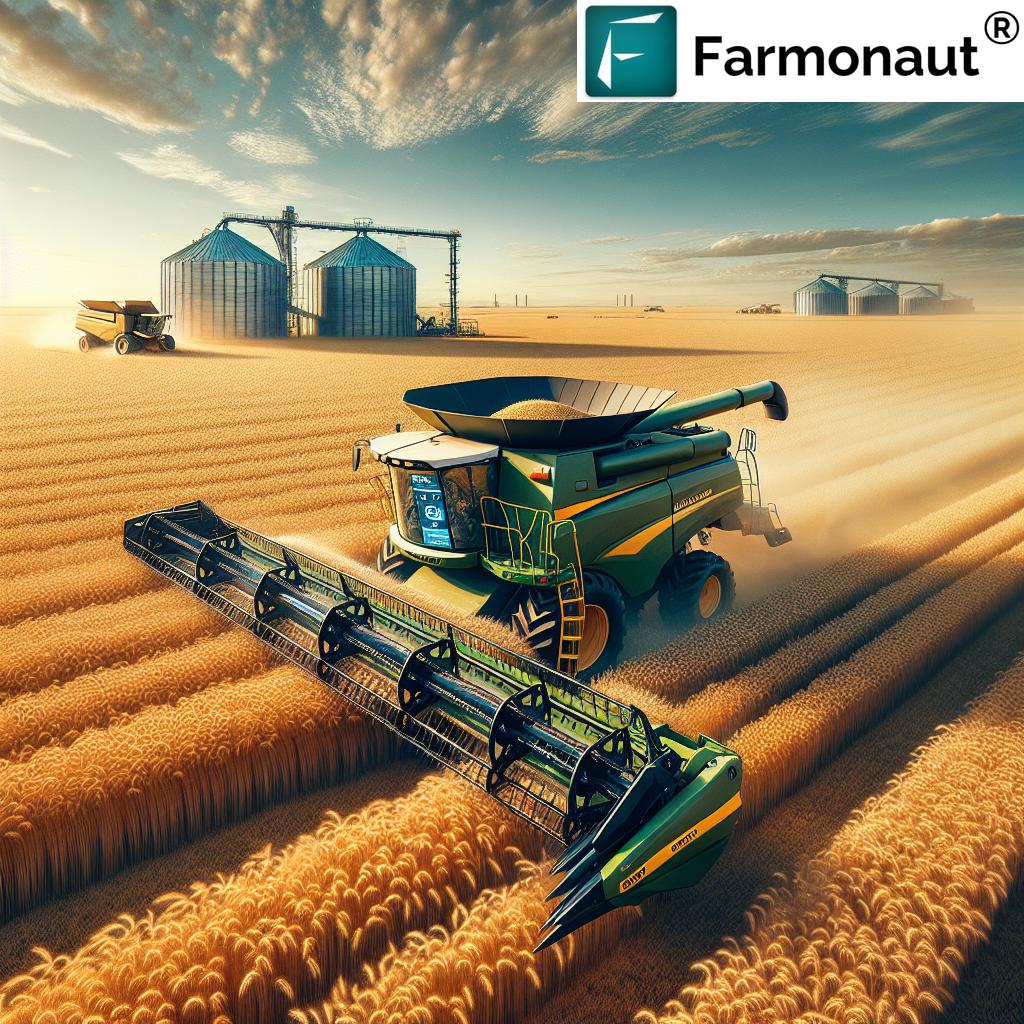Ultimate Guide: Optimizing Shearing Shed Design for Efficient Wool Production and Livestock Management
“Efficient shearing shed design can increase wool production by up to 25% through improved livestock handling and processing.”
Welcome to our comprehensive guide on optimizing shearing shed design for efficient wool production and livestock management. As experts in agricultural technology and sustainable farming practices, we at Farmonaut understand the critical role that well-designed infrastructure plays in the success of sheep farming operations. In this article, we’ll explore essential considerations for creating a functional, animal-friendly shearing environment that maximizes productivity and enhances overall farm efficiency.
Whether you’re planning a new construction or looking to retrofit an existing facility, this guide will provide valuable insights into creating a shearing shed that meets the needs of modern wool production. We’ll cover everything from pen layout and space allocation to equipment maintenance and sustainable farming techniques.
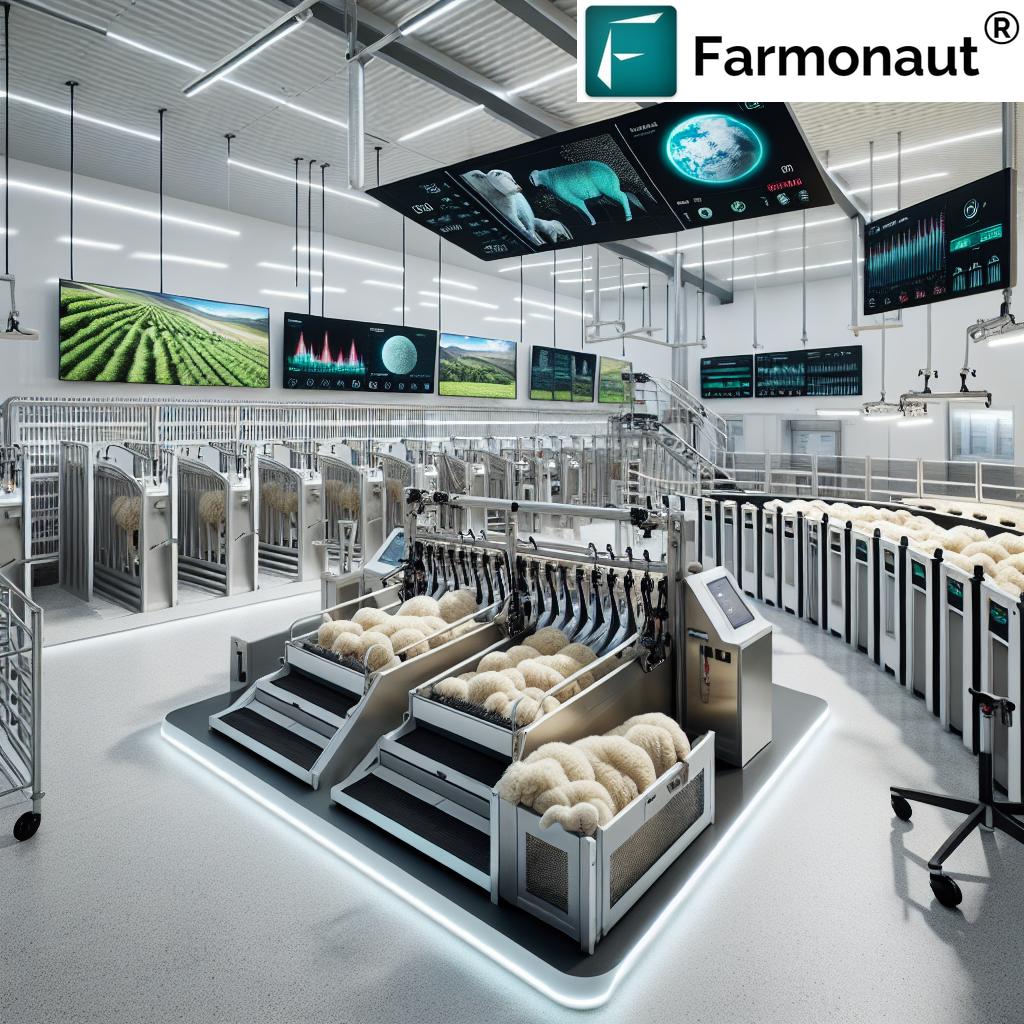
The Importance of Efficient Shearing Shed Design
An efficiently designed shearing shed is the cornerstone of successful wool production and sheep management. It not only facilitates smoother operations but also contributes significantly to animal welfare, worker safety, and overall farm productivity. Let’s delve into the key aspects that make a well-designed shearing shed indispensable:
- Improved Workflow: A thoughtfully laid out shed minimizes unnecessary movement and streamlines the shearing process.
- Enhanced Animal Welfare: Proper design reduces stress on sheep, leading to better quality wool and healthier animals.
- Increased Productivity: Efficient layouts allow shearers to work more effectively, increasing the number of sheep processed per day.
- Better Wool Handling: Well-designed wool rooms ensure proper sorting, grading, and storage of fleeces.
- Worker Safety: Ergonomic designs and proper equipment placement reduce the risk of injury to shearers and handlers.
By focusing on these aspects, farmers can create a shearing environment that not only meets current needs but also adapts to future challenges in the wool industry.
Key Components of a Shearing Shed
A well-designed shearing shed comprises several essential areas, each serving a specific purpose in the wool production process. Let’s explore these key components:
1. In-Shed Pens
In-shed pens are crucial for efficient sheep handling before and after shearing. Consider the following design aspects:
- Capacity: Ensure pens can hold enough sheep for continuous workflow.
- Layout: Design pens to facilitate easy movement of sheep towards the catching pens.
- Flooring: Use non-slip materials to prevent injuries and stress to the animals.
- Ventilation: Proper airflow is essential for animal comfort and health.
2. Catching Pens
Catching pens are where shearers retrieve sheep for shearing. Key considerations include:
- Size: Adequate space for shearers to work comfortably.
- Access: Easy entry and exit points for both shearers and sheep.
- Lighting: Sufficient illumination for safety and efficiency.
3. Shearing Board
The shearing board is the heart of the operation. Consider these factors:
- Raised vs. Flat Board: Choose based on shearer preference and efficiency.
- Space Allocation: Ensure enough room for shearers to maneuver safely.
- Equipment Placement: Optimize the location of shearing machinery and tools.
4. Wool Room
An efficiently designed wool room is crucial for proper fleece handling:
- Sorting Area: Ample space for grading and classing wool.
- Storage Solutions: Appropriate bins and bales for different wool grades.
- Pressing Equipment: Strategically placed for efficient wool bale production.
By carefully considering each of these components, farmers can create a shearing shed that maximizes efficiency and maintains high standards of animal welfare.
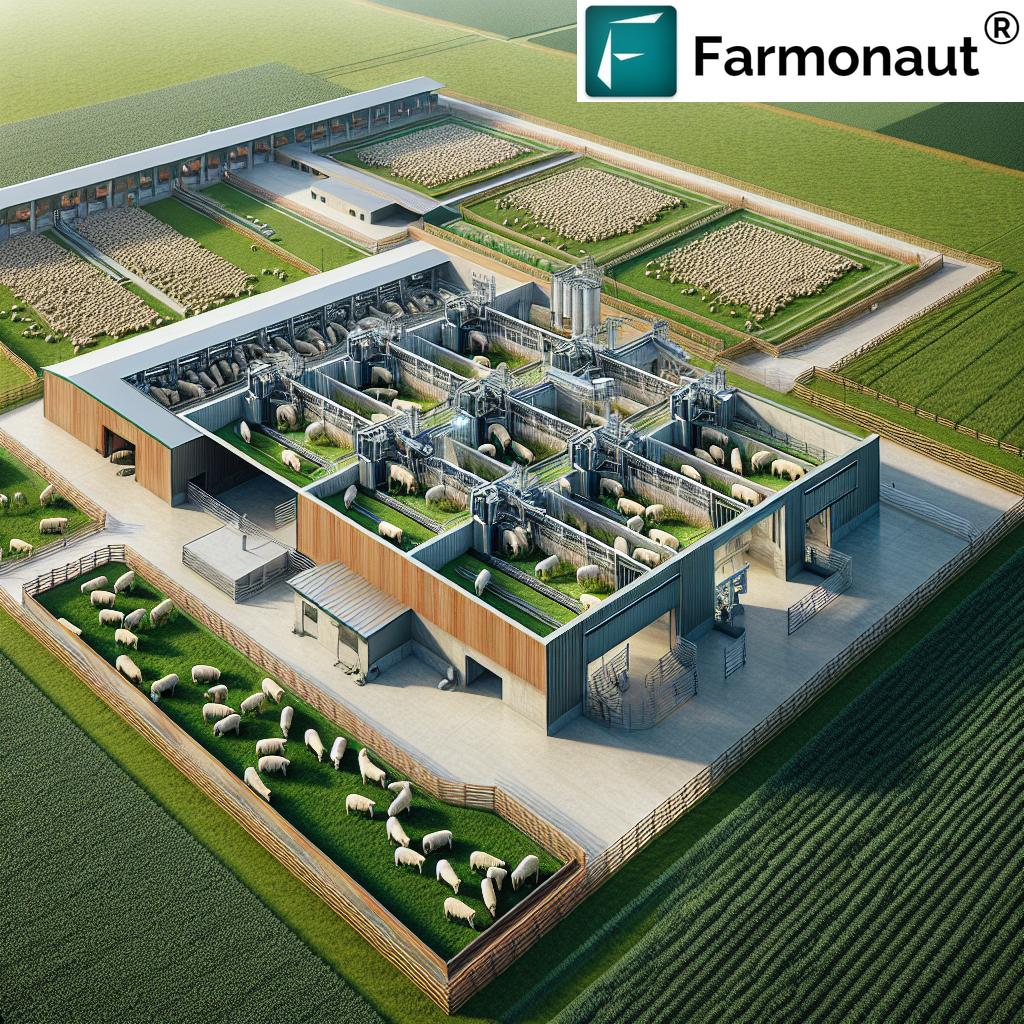
Design Considerations for Efficient Sheep Handling
Efficient sheep handling is crucial for both animal welfare and operational productivity. Here are key design considerations to optimize your shearing shed for smooth livestock management:
1. Flow and Movement
- Circular Design: Consider a circular layout that allows for continuous movement of sheep through the shearing process.
- Wide Corridors: Ensure passages are wide enough to prevent bottlenecks and allow easy movement of sheep and workers.
- Gentle Slopes: Incorporate slight inclines where necessary to encourage natural sheep movement.
2. Pen Design
- Flexible Partitions: Use movable gates to adjust pen sizes based on flock size and shearing needs.
- Rounded Corners: Avoid sharp angles in pens to prevent sheep from bunching or getting stuck.
- Visual Barriers: Implement solid partitions in some areas to reduce stress and improve flow.
3. Flooring
- Non-Slip Surfaces: Use materials that provide good traction for both sheep and workers.
- Easy-to-Clean: Choose flooring that facilitates quick and thorough cleaning between shearing sessions.
- Durability: Select materials that can withstand heavy traffic and frequent cleaning.
4. Lighting and Ventilation
- Natural Light: Incorporate skylights or large windows to reduce reliance on artificial lighting.
- Adjustable Lighting: Install dimmable lights to create a calming environment for sheep.
- Cross Ventilation: Design for good airflow to maintain comfortable temperatures and reduce odors.
By implementing these design considerations, you can create a shearing shed that not only improves efficiency but also prioritizes the well-being of both sheep and workers.
“Optimized pen layouts in shearing sheds can reduce sheep stress by 30%, leading to higher quality wool yields.”
Optimizing the Shearing Board
The shearing board is where the actual wool removal takes place, making it a critical area for optimization. Here’s how to design an efficient shearing board:
1. Raised vs. Flat Board Configuration
The choice between a raised or flat shearing board can significantly impact efficiency:
- Raised Board: Offers better ergonomics for shearers, reducing strain and fatigue.
- Flat Board: Easier for moving sheep and cleaning, but may be less comfortable for shearers over long periods.
2. Space Allocation
- Individual Stands: Allocate at least 2.5m x 2.5m per shearing stand.
- Walkways: Ensure sufficient space between stands for safe movement.
- Equipment Storage: Designate areas for tools and personal items near each stand.
3. Equipment Placement
- Power Points: Install conveniently located, weather-protected electrical outlets.
- Overhead Support: Use sturdy beams for hanging shearing machinery.
- Wool Chutes: Position chutes for easy fleece removal from the board to the wool room.
Optimizing your shearing board layout can significantly improve the efficiency and comfort of your shearing operations.
Wool Room Layout and Management
An efficiently designed wool room is crucial for maintaining the quality of your wool product. Here are key considerations for optimizing your wool room layout:
1. Sorting and Grading Area
- Ample Space: Provide sufficient room for wool classers to work comfortably.
- Lighting: Install bright, even lighting to facilitate accurate grading.
- Sorting Tables: Use large, clean surfaces for efficient fleece assessment.
2. Storage Solutions
- Wool Bins: Implement a system of labeled bins for different wool grades.
- Bale Storage: Designate a clean, dry area for storing completed wool bales.
- Fleece Sheets: Keep a supply of clean sheets for covering sorted wool.
3. Pressing and Packaging
- Wool Press: Position the press for easy access from sorting areas and to storage.
- Scale: Install an accurate weighing system near the press.
- Labeling Station: Set up an area for properly marking and documenting bales.
4. Workflow Optimization
- Linear Flow: Design the room to allow for a logical progression from sorting to pressing to storage.
- Workstation Ergonomics: Ensure all workstations are set up to minimize strain and maximize efficiency.
- Traffic Management: Plan pathways that prevent congestion and cross-contamination of wool grades.
By carefully planning your wool room layout, you can ensure that your high-quality wool is handled efficiently and maintains its value throughout the process.
Sustainable Practices in Shearing Shed Design
Incorporating sustainable practices into your shearing shed design not only benefits the environment but can also lead to cost savings and improved efficiency. Here are some key areas to consider:
1. Energy Efficiency
- Solar Panels: Install solar panels on the shed roof to generate clean energy.
- LED Lighting: Use energy-efficient LED lights throughout the facility.
- Natural Ventilation: Design the shed to maximize airflow, reducing the need for electric fans.
2. Water Conservation
- Rainwater Harvesting: Implement a system to collect and store rainwater for cleaning purposes.
- Efficient Cleaning Systems: Use high-pressure, low-volume cleaning equipment to reduce water usage.
- Greywater Recycling: Consider treating and reusing water from the cleaning process for irrigation.
3. Waste Management
- Composting: Set up a system to compost organic waste from the shearing process.
- Recycling Stations: Designate areas for separating and recycling materials like plastic and cardboard.
- Wool Waste Utilization: Explore options for using lower-grade wool in insulation or other products.
4. Sustainable Materials
- Recycled Building Materials: Where possible, use recycled or sustainably sourced building materials.
- Low-VOC Paints: Choose eco-friendly paints and finishes to reduce harmful emissions.
- Durable Flooring: Select long-lasting, easy-to-maintain flooring options to reduce replacement frequency.
By integrating these sustainable practices into your shearing shed design, you can create a more environmentally friendly and cost-effective facility.
Integrating Technology for Enhanced Efficiency
In today’s digital age, incorporating technology into your shearing shed can significantly boost efficiency and productivity. Here’s how you can leverage modern solutions:
1. Automated Sheep Counting Systems
- RFID Tracking: Implement Radio-Frequency Identification tags for accurate sheep counting and tracking.
- Automated Gates: Use sensor-controlled gates to manage sheep flow more effectively.
- Data Integration: Connect counting systems with management software for real-time flock monitoring.
2. Climate Control Technology
- Smart Thermostats: Install programmable systems to maintain optimal temperatures.
- Humidity Sensors: Use sensors to monitor and control moisture levels for wool quality.
- Automated Ventilation: Implement systems that adjust airflow based on environmental conditions.
3. Digital Wool Classification
- Spectral Imaging: Utilize advanced imaging technology for more accurate wool grading.
- Digital Scales: Implement precise digital weighing systems integrated with management software.
- Barcode Labeling: Use barcode systems for efficient tracking of wool bales.
4. Precision Agriculture Solutions
At Farmonaut, we specialize in providing cutting-edge technology for agricultural management. Our satellite-based solutions can enhance your overall farm management, complementing your efficient shearing shed operations:
- Satellite Crop Monitoring: Use our advanced imagery to assess pasture health and plan grazing rotations.
- Weather Forecasting: Access accurate weather predictions to schedule shearing activities optimally.
- Farm Management Apps: Utilize our mobile and web applications for comprehensive farm data management.
To explore how Farmonaut’s technology can revolutionize your farm management, visit our web app or download our mobile apps:
By integrating these technological solutions, you can significantly enhance the efficiency and productivity of your shearing operations while maintaining high standards of animal welfare and wool quality.
Maintenance and Hygiene in Shearing Sheds
Proper maintenance and hygiene are crucial for the longevity of your shearing shed and the health of your livestock. Here are essential practices to implement:
1. Regular Cleaning Routines
- Daily Sweep: Clear floors of debris and wool scraps after each shearing session.
- Weekly Deep Clean: Thoroughly wash floors, walls, and equipment with appropriate disinfectants.
- Seasonal Maintenance: Conduct a comprehensive cleaning and inspection before and after the shearing season.
2. Equipment Maintenance
- Shearing Gear: Clean and oil shearing equipment daily to ensure optimal performance.
- Wool Press: Regularly inspect and service the wool press to prevent breakdowns during peak times.
- Ventilation Systems: Clean fans and vents monthly to maintain good air quality.
3. Pest Control
- Rodent Prevention: Implement measures to keep rats and mice away from wool storage areas.
- Insect Management: Use appropriate treatments to control flies and other insects that can affect sheep health.
- Regular Inspections: Conduct routine checks for signs of pest infestation and address issues promptly.
4. Biosecurity Measures
- Footbaths: Install and maintain footbaths at entry points to prevent the spread of diseases.
- Visitor Protocols: Establish clear guidelines for visitors to minimize biosecurity risks.
- Quarantine Areas: Designate spaces for isolating new or sick animals away from the main flock.
By maintaining a clean, well-organized, and hygienic shearing shed, you can ensure the health of your sheep, the quality of your wool, and the efficiency of your shearing operations.
Shearing Shed Design Comparison
| Design Type | Capacity | Space Efficiency (1-5) | Wool Handling Efficiency (1-5) | Animal Welfare Considerations | Recommended Features |
|---|---|---|---|---|---|
| Traditional Flat Board | 100-200 sheep | 3 | 3 | Basic comfort, potential for stress in confined spaces | Wide corridors, non-slip flooring |
| Modern Raised Board | 200-400 sheep | 4 | 4 | Improved flow, reduced handling stress | Ergonomic design, efficient wool chutes |
| Circular Design | 300-600 sheep | 5 | 5 | Optimal flow, minimal stress on animals | 360-degree workflow, central wool handling area |
| Mobile Shearing Unit | 50-100 sheep | 2 | 2 | Flexible, can be set up in familiar environments | Compact design, easy-to-clean surfaces |
This table provides a quick comparison of different shearing shed designs, helping you understand the pros and cons of each option. Consider your specific needs and constraints when choosing the most suitable design for your operation.
Leveraging Farmonaut’s Technology for Comprehensive Farm Management
While optimizing your shearing shed is crucial, it’s equally important to enhance overall farm management. Farmonaut offers cutting-edge satellite-based solutions that can complement your efficient shearing operations:
- Pasture Health Monitoring: Use our satellite imagery to assess grazing areas and plan rotations effectively.
- Weather Forecasting: Access accurate predictions to schedule shearing and other farm activities optimally.
- Farm Management Dashboard: Utilize our comprehensive platform for data-driven decision-making across your farm.
To explore how Farmonaut’s technology can revolutionize your farm management, visit our web app or consider our API solutions for custom integration:
Conclusion: Building a Future-Ready Shearing Shed
Designing an efficient shearing shed is a crucial investment for any sheep farmer looking to optimize wool production and livestock management. By carefully considering layout, incorporating sustainable practices, and leveraging modern technology, you can create a facility that not only meets current needs but is also adaptable to future challenges in the wool industry.
Remember, an optimized shearing shed goes beyond just the physical structure. It’s about creating a holistic system that prioritizes animal welfare, worker safety, and operational efficiency. From the initial design phase to ongoing maintenance and technological integration, every aspect plays a vital role in the success of your wool production.
As you embark on your journey to create or upgrade your shearing shed, consider the following key takeaways:
- Focus on flexible, animal-friendly designs that promote smooth workflow.
- Integrate sustainable practices to reduce environmental impact and operational costs.
- Leverage technology for improved efficiency and data-driven decision-making.
- Prioritize maintenance and hygiene to ensure longevity and animal health.
- Stay informed about industry trends and be open to adapting your facilities accordingly.
By implementing the strategies and considerations outlined in this guide, you’ll be well-positioned to create a shearing shed that stands the test of time, enhances productivity, and contributes to the overall success of your sheep farming operation.
FAQ Section
Q1: What is the ideal size for a shearing shed?
A1: The ideal size depends on your flock size and operational needs. Generally, allow for 0.5-1 square meter per sheep in holding pens, plus additional space for shearing stands, wool handling, and storage. For a flock of 1000 sheep, a shed of 200-300 square meters might be suitable.
Q2: How many shearing stands should I include in my shed?
A2: This depends on your flock size and shearing schedule. A general rule is one stand per 1000-1500 sheep. For larger operations, consider multiple stands to increase efficiency.
Q3: What flooring material is best for a shearing shed?
A3: Concrete is commonly used due to its durability and ease of cleaning. However, consider adding rubber mats in shearing areas for comfort and non-slip properties.
Q4: How can I improve ventilation in my shearing shed?
A4: Implement a combination of natural and mechanical ventilation. Use adjustable side walls, roof vents, and strategically placed fans to ensure good air circulation.
Q5: What are the key considerations for wool room design?
A5: Focus on ample space for sorting and grading, good lighting, efficient storage solutions, and a logical workflow from shearing to bale storage.





